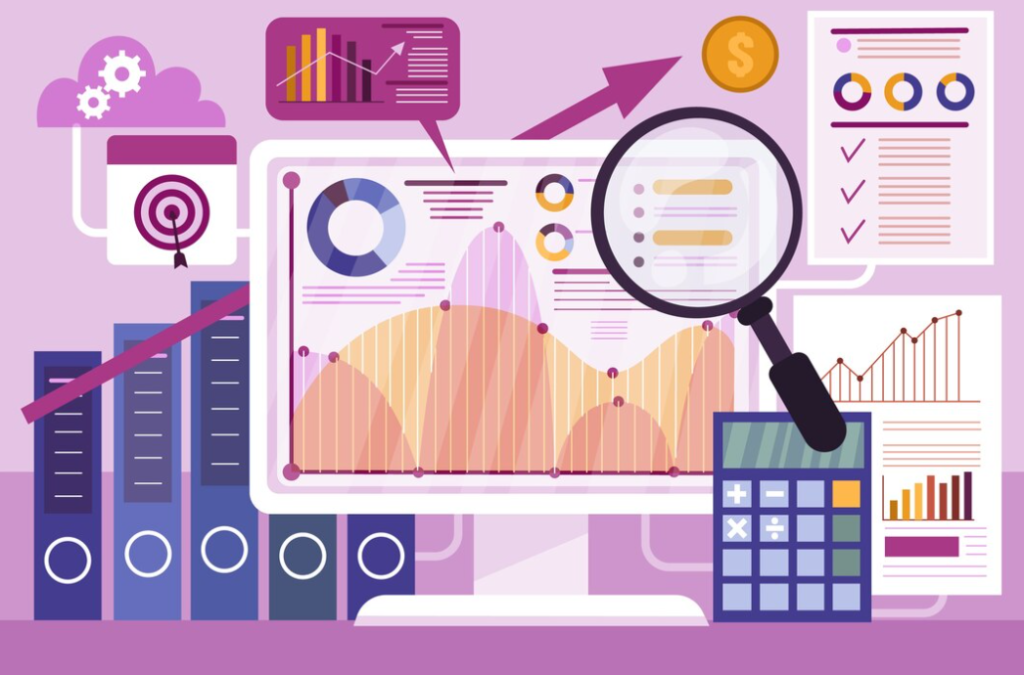In today’s data-driven world, the quality and integrity of information are paramount to decision-making and success in various industries. As we generate, collect, and analyze vast amounts of data, it becomes essential to ensure its accuracy, consistency, and reliability. Enter the concept of a data audit, a systematic review of data to assess its quality and the processes involved in its handling.
What Is A Data Audit?
A data audit is a comprehensive procedure that meticulously evaluates each phase of the data science workflow. Since challenges or discrepancies can arise at any juncture within this workflow, a thorough audit necessitates close scrutiny at every stage. In a subsequent discussion, we’ll delve into various diagnostic methods designed to identify these challenges, as well as potential solutions to rectify issues uncovered during the audit.
For the context of this current discussion, we’ll operate under the assumption that we possess complete access to the model under consideration. However, it’s worth noting that many of the evaluation criteria and methods can be applied even when our access to the model or data might be restricted or limited.
At its core, a data audit encompasses four primary stages:
- DATA;
- DEFINE;
- BUILD;
- MONITOR.
To effectively audit a specific algorithm, we probe into questions tailored to each of these distinct phases.
Questions related to DATA
- What type of data have you gathered?;
- Is it sufficient in quantity and pertinent in quality?;
- How would you rate the credibility of your data?;
- Are there any biases present?;
- Does the data’s accuracy vary?;
- What methods do you use to validate this?;
- Does your data set have consistent gaps or omissions?;
- Are there any skewed representations of events, behaviors, or demographics?;
- What strategies are in place for processing the data, especially when encountering missing values, outliers, or implausible data points?;
- What benchmarks or reference points guide you in addressing these challenges?
In data science, the foundation of any model or algorithm is its underlying data. When auditing this critical element, several key questions arise to ensure data integrity and relevance. This begins with assessing the data’s nature: Is it suitable, adequate, and relevant? Authenticity and trustworthiness are essential, leading to questions about biases and accuracy. Additionally, one must examine if the data has omissions or biases that affect its representation. Finally, data processing techniques, such as handling missing values and identifying outliers, are scrutinized. Evaluating the standards used to address these data challenges provides insights into data reliability.
Questions related to DEFINE
- What constitutes “success” for your algorithm?;
- Are alternate interpretations of success considered?;
- How might altering this definition influence the outcomes?;
- Which characteristics are you considering to correlate with successful or unsuccessful outcomes?;
- How closely do these characteristics directly relate to your success criteria, and are some merely stand-ins or proxies?;
- What challenges or pitfalls could arise from such selections?
In the DEFINE phase of a data audit, it’s essential to precisely understand the criteria for algorithmic “success.” This involves exploring alternative interpretations and considering how adjustments to the definition can impact results. Additionally, carefully selecting the attributes used to measure success is crucial. Some attributes may act as proxies and should be evaluated for their direct relevance to the predetermined success criteria. The DEFINE phase is pivotal in shaping the accuracy and direction of the entire audit process.

Questions related to BUILD
- Which algorithmic approach is most appropriate?
- What steps are taken to fine-tune the model?
- How do you determine the optimal performance of the algorithm?
In the BUILD phase of data algorithm development, crucial questions arise to shape the model’s foundation and effectiveness. These include selecting the right algorithmic approach for the data and problem, fine-tuning the model for accurate predictions through calibration, and achieving optimal performance without overfitting. These questions are vital for creating an accurate, robust, and reliable model.
Questions related to MONITOR
- How effectively is the model performing in a real-world setting?;
- Is there a requirement for periodic model updates?;
- What is the distribution pattern of errors within the model?;
- Are there any unforeseen outcomes or repercussions due to the model?;
- Does the model contribute to a broader iterative process or system?.
In the MONITOR phase of a data model’s lifecycle, the focus shifts to evaluating and maintaining the model’s real-world performance. This involves assessing its adaptability to changing data and the need for updates. Understanding error distribution is crucial for spotting weaknesses or biases. Additionally, it examines broader implications and unintended consequences, ensuring the model remains relevant, efficient, and ethical.
Conclusion
In our digital era, a rigorous data audit is indispensable. Broken down into four core phases – DATA, DEFINE, BUILD, and MONITOR – each comes with its own set of critical questions. From ensuring data integrity and defining success benchmarks to building resilient models and their subsequent monitoring, a data audit equips businesses to leverage their data effectively. In a nutshell, by refining and validating data processes, a data audit enhances decision-making and fortifies the pillars of contemporary business success.
